Ever since we started planning our 7 days trip to Bhutan, the one thing we were constantly looking forward to was the trek to the Tiger’s Nest or the Paro Taktsang as the temple / monastery is known as. And why not, this was the first trek we were planning with our kids. And also, to some place which is the most famous in Bhutan. No doubt every magazine cover, blog cover (including ours 😛 ) and everywhere that you search for information on Bhutan, you see an image of the Tiger’s Nest. So much so that it has become synonym to Bhutan Tourism.
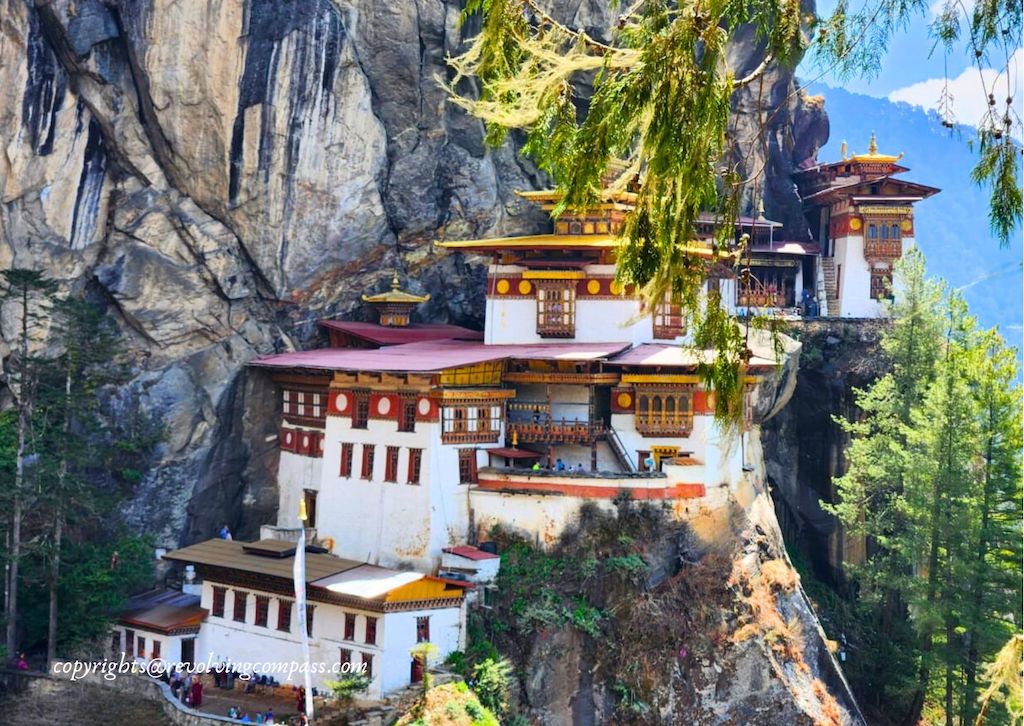
However, our excitement was also rooted in the fact that we were not sure if we could complete this trip with kids. I am sure many of you who will plan a trip to Bhutan will wonder. Can I trek to the Tiger’s Nest with my kids ? Can I trek to the Paro Taktsang with my elderly parents? How easy or difficult is the trek? In this post, I will answer all such possible questions for you. But before we dive into our guide on trekking to the Tiger’s Nest conquering one stair at a time, let me quickly introduce you to the history of Tiger’s Nest.
PS: Traveling to Bhutan with kids – don’t repeat the mistakes we made
An introduction to Tiger’s Nest Bhutan or Paro Taktsang
The Tiger’s Nest is known with several other names. Paro Taktsang Monastery or Taktsang Palphug Monastery is also it’s names. However most popularly it is known as the Tiger’s Nest. It is a sacred Vajrayana Himalayan Buddhist site. Which is located above the valley of Paro in Bhutan. What makes it very interesting is it’s location on the side of a cliff. Which gives the feeling that it’s almost hanging from the edge of the cliff. However much you have seen it in pictures, when you get the first glimpse of this place, you wonder how it was ever built like this. It is actually one of thirteen Tiger’s Nest caves in Tibet. However, Taktsang is the best known of the thirteen taktsang or “tiger lair” caves.
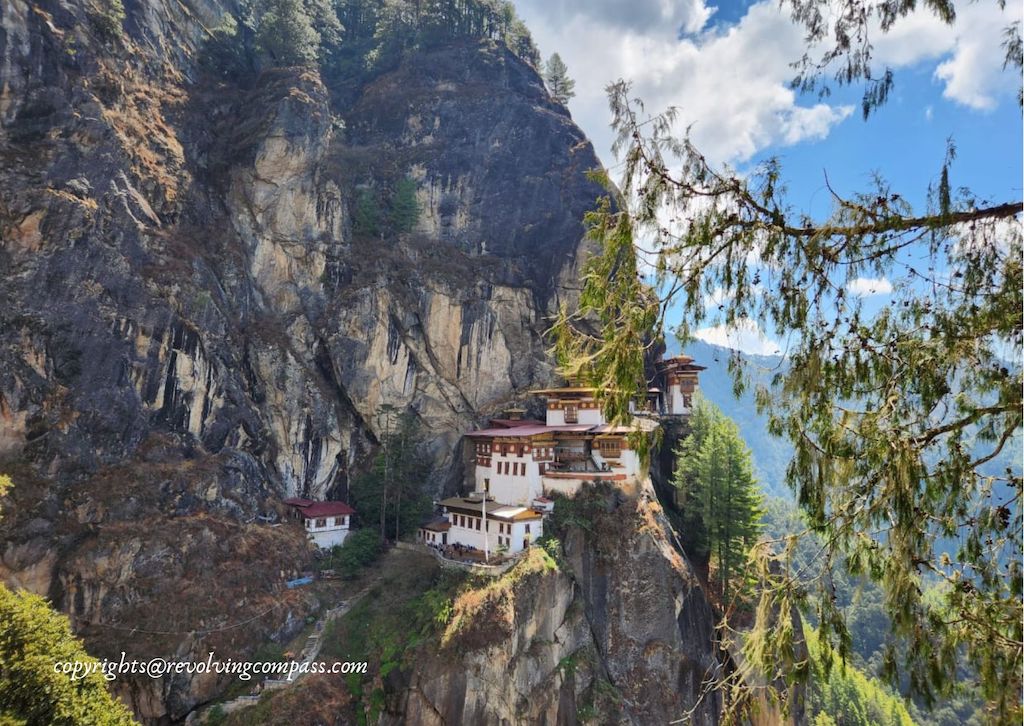
Built fully around 1962 and developed into a monastery complex, this cave was used by Guru Padmasambhava and his pupils to meditate. Ever since it’s inception, it emerged as the cultural symbol of the kingdom of Bhutan.
Interesting legends associated with Tiger’s Nest
-
It is said that Guru Padmasambhava actually flew to the cave on the back of a tigress. And hence when the monastery was built here, it was called the Tiger’s Nest. The word “Taktsang” literally means “Tiger’s lair”.
-
Another legends builds on top of the above, telling that one of the empress who became a devotee to the Guru, actually transformed herself into a tigress. And then carried the Guru on her back to this place!!
-
Yet another story tells that when Guru Padmasambhava reincarnated as Tenzin Rabgye, he built the monastery around this place in 1962.
-
It is believed that during the time Tenzin Rabgye stayed here, he could be seen concurrently inside and outside the cave,
-
Also, it is believed that due to the positive energy and the divine forces that reside here, there never has been an injury for people visiting here for worship. Also, any small amount of food always proved adequate for all the visitors here!!
What is the altitude of the Tiger’s Nest Bhutan?
The overall height of Tiger’s Nest Temple is 2,950 meters (9,678 feet) above the sea level. It is 800 meters higher than the valley of Paro from where the trekking starts. So, overall, as a part of trekking to the Tiger’s Nest Temple, one covers an altitude of 800 meters!
What is the difficulty level of hiking the Tiger’s Nest Bhutan?
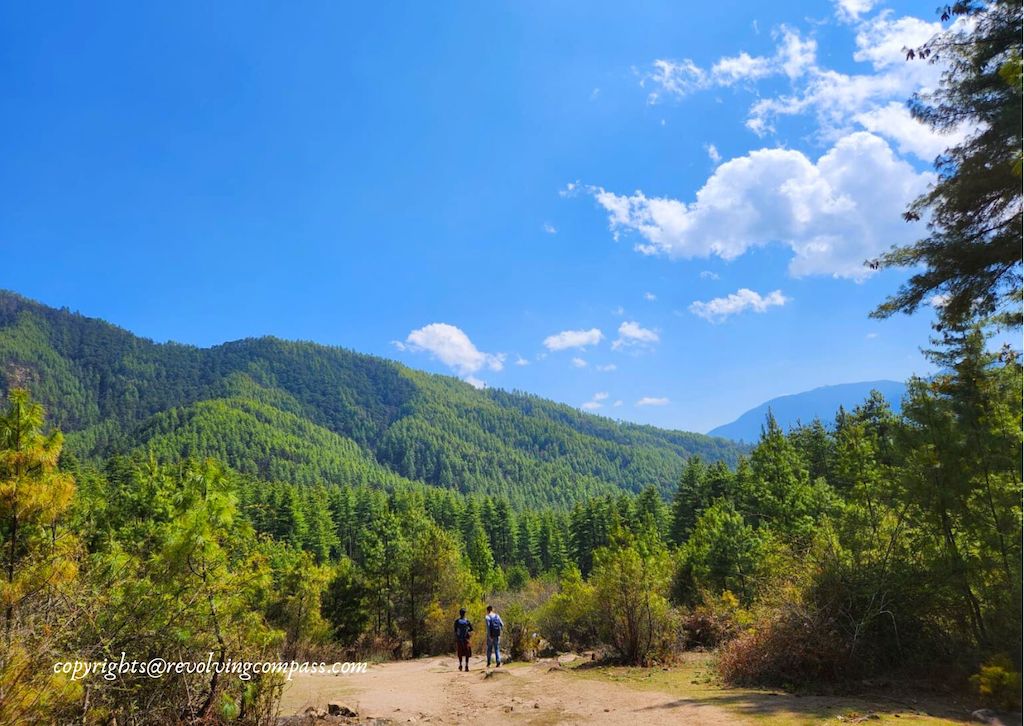
The difficulty level of hiking the Tiger’s Nest in Bhutan is moderate. It is not very easy. And it is also not difficult. Even elderly and kids are able to comfortably trek this path. But, the time taken by different people are different. One of our friends who visited here earlier this year, it took almost 8 hours to complete the whole trek both ways. While, there are people who have completed the trek in as quick as 3 – 3.5 hrs. So, how much time it will take to complete the trek to Tiger’s Nest and back really depends on each person’s stamina, trekking practice, how many breaks they take, whether they are traveling with kids and elderly etc.
There are steps carved out of the mountain to trek upto the Tiger’s Nest. However they are not all even. And neither of the same height or width. Some patches are very comfortable. At others the height of the steps is more. Where little kids or elderly might need an assistance. Near the entrance, you get a stick that you can borrow for the trek. This will help you navigate the rough patches of the trek. But overall, it is not very difficult.
How many steps are there when hiking the Tiger’s Nest Bhutan?
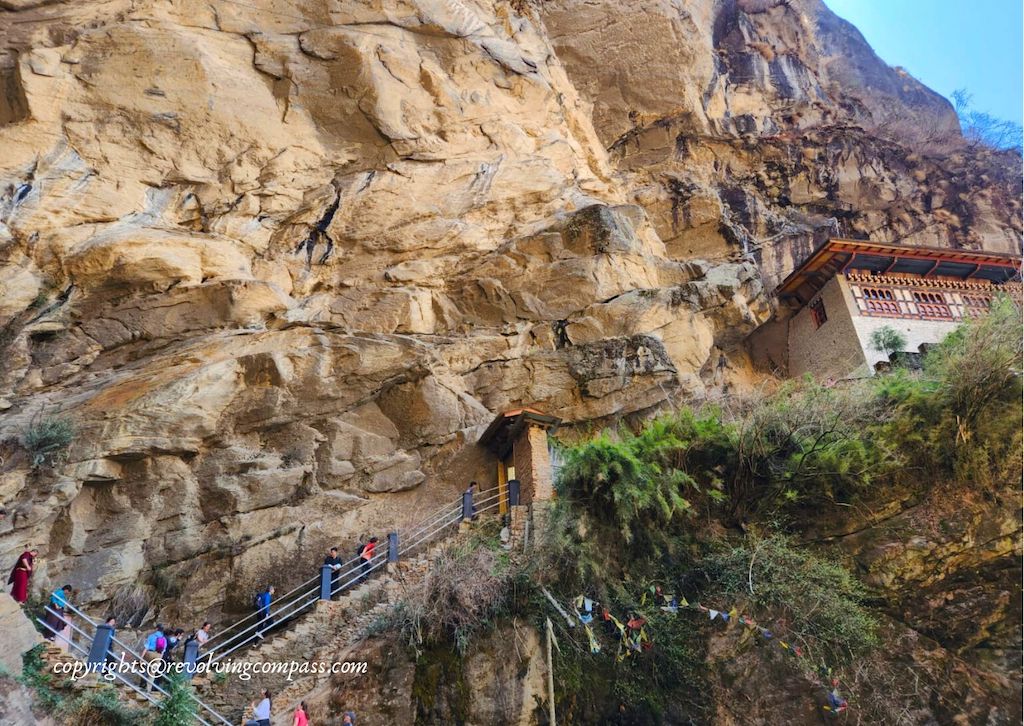
There are a total of around 1000 steps that you cover overall when hiking the Tiger’s Nest Bhutan. These include steps during the trek. And also a lot of steps inside the Tiger’s Nest Monastery. So, those who won’t be entering the Tiger’s nest monastery will have to deal with less number of steps overall.
What is the best season to trek through Tiger’s Nest Bhutan?
Spring and summer (before the rains) are the best season to trek through the Tiger’s Nest Bhutan. Because once rains start, the path becomes muddy and slippery. While in winters also, if it snows then the path is difficult to traverse. So, plan the trek accordingly. However, I know people who have trekked here in winter, summer and autumn. And they all had positive experiences.
Can I trek to the Paro Taktsang with Kids?
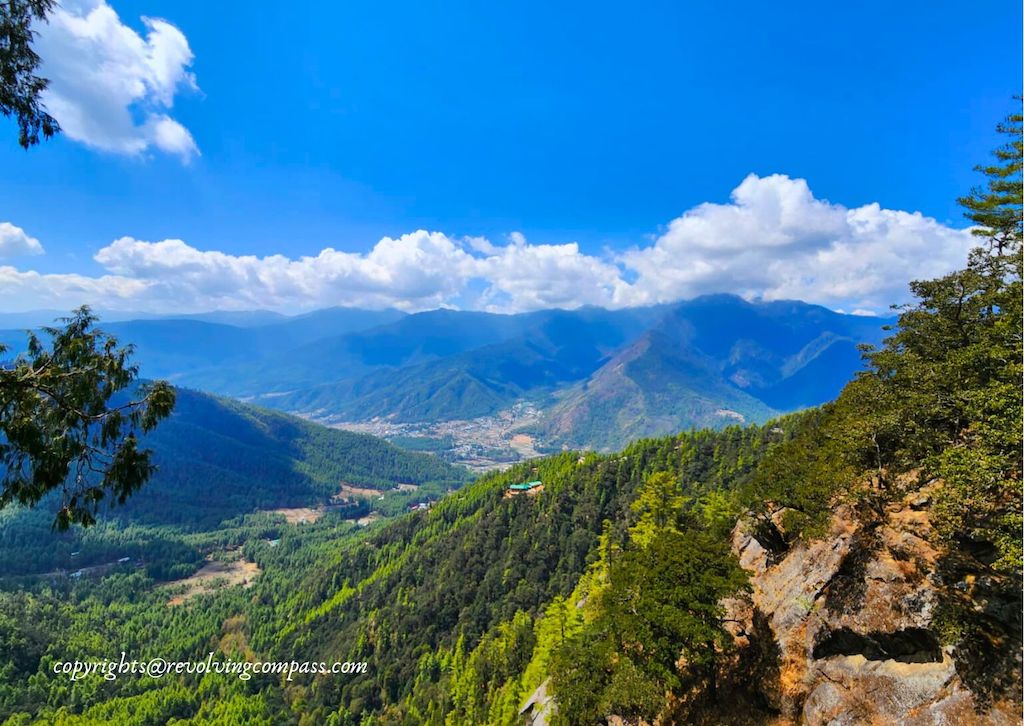
People trek to Paro Taktsang all the time. When we first asked our guide if we could plan the trip to Paro Taktsang with kids, he discouraged us, to be honest. He said people get over ambitious, and start the trek with kids. But they are rarely able to complete it. However, this didn’t deter our determination to trek to the Paro Taktsang with kids. Since, hiking the Tiger’s Nest was the last thing on our trip itinerary, we got ample of opportunity through out the trip to interact with other families with kids whom we met.
And we were relieved to find out that most of them had completed their Tiger’s Nest trek with their kids without any issues. In fact, the kids enjoyed the trek more than the parents. Particularly if they had company of other kids. Some parents even commented that the kids reached to the top before the parents did!!
These interactions gave us a lot of confidence to carry the trek with our kids. Also, later on someone informed us that the guides generally discourage from carrying kids. Because often parents request the guides to carry the kids on their shoulders or back when the kids get tired. Definitely not something the guides enjoy doing. But perhaps they are not able to refuse either. And so they do their best to see that the kids don’t come on the trek at all 😀
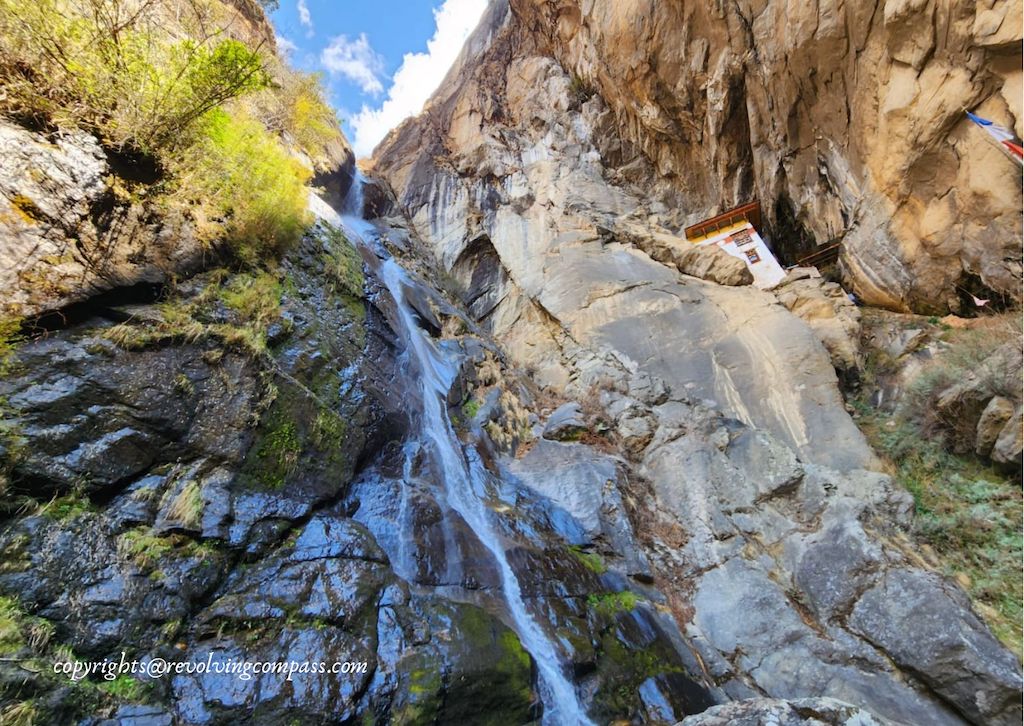
Having said that, you will be the best judge of your kid’s capacity. If your kids are used to some kind of daily physical activities like cycling , walking, running or even swimming, then they will be able to do this trek very easily. But you should also consider the fact that if the kid gets tired midway through the hike, will you be able to carry them with you. If you think you can do that, then you are covered for any risks of the kid refusing to walk further when midway through etc. 🙂
Can elderly try hiking the Tiger’s Nest Bhutan?
We met several elderly groups on our trip to Bhutan who had just completed the trek to the Paro Taktsang successfully. So yes, elderly can hike the Tiger’s Nest Bhutan without much difficulty. They might take more time than the young adults. And might need more rest and more frequent breaks. But, none of the elderly we talked to faced any kind of issues while completing this trek. In fact, the ones who were in groups particularly seemed to have enjoyed their trek to the Tiger’s Nest thoroughly. If you have elderly in your group, plan to reserve ample time for the trek. And give them sufficient breaks in between. Walk with them instead of leaving them behind. Because they might need some assistance here and there on the difficult steps and slopes.
Is a transport available to go to Tiger’s Nest Bhutan ?
There are mules available while hiking Tiger’s Nest. But the mules and horses take you only till the half point, where the cafe is there. After this point, there is only one option – to trek through rest of the path on your foot. Also, while coming back, there is no other alternative than to walk down the path. So, yes, you can say transport is available. But for only 1/4th of the journey. 🙂 However, if you think this will help you conserve energy and complete the trek conveniently, by all means, go for it. However, I personally felt this option was not of much help.
Is there food and refreshment option available during the Tiger’s Nest Trek?
Half way through the hiking to Tiger’s Nest, there is a small cafe. Mostly while going up, people order whatever they want. And by the time they trek down to the cafe, the food is kept ready. However, there are very limited options of food available. So, if you are particular about the food, then better to pack your own food and carry it with you. At the same time, do remember not to make your bag too heavy. As it will weigh you down during the trek. So, what you should do is for each member of the group or family traveling with you, distribute the packaged food and let everyone carry their load. Also, water is available at this cafe. But, better to carry few bottles of drinking water with you for the trekking path.
What is the ticket cost for trekking the Tiger’s Nest Bhutan?
There is no cost of just trekking till the Tiger’s Nest Monastery and viewing it from afar. Only when you enter inside the monastery, there is a ticket that you need to purchase. This Tiger’s Nest entry ticket costs 2000 BTN (~2000 INR) per adult and 1000 BTN (~ 1000 INR) per kid above the age of 5 years. Now, the trick is that the ticket needs to be purchased at the starting point of the Tiger’s Nest trek itself. So, you have to decide while starting itself whether you want to go all the way inside the monastery. Or, just view it from outside.
Many tourists who don’t want to spend so much on the ticket opt for the later. There are many view points all through the trek that give beautiful views of the Tiger’s Nest Monastery from different angles. So, in case you know you can be satisfied with these views, you can do the trip without buying the tickets.
Also, if you feel you are not going to complete the full trek all the way up. Then also, there is no point buying the ticket. Since, there could be several reasons which might prompt you to go half way through or till whatever point you can, and then return from there. Some of the reasons could be traveling with kids, or elderly. Or, you are not used to walking or trekking so much. Also, it could be because of certain health conditions. In short, if you are certain you are not going to complete the full tour of hiking to Tiger’s Nest and entering the monastery then you need not buy the ticket.
Other general tips on visiting Tiger’s Nest Paro
-
Start from your hotel as early in the morning as possible for your trip to Tiger’s Nest Paro. The earlier you reach, the lesser will be the queues on the ticket counter. And also more favourable will be the weather
-
Carry enough drinking water with you. And an umbrella as weather can be little unpredictable during this time.
-
Pack your breakfast from your hotel for the trek. Most of the hotels are aware of the drill. So, just let them know you plan to visit Tiger’s Nest the next morning. And they will keep your breakfast packed.
-
Wear proper hiking shoes. We took these hiking shoes for Abhishek, this hiking shoe for myself, and this one for the kids.
-
Taking plenty of rest in while hiking the tiger’s nest if you feel exhausted, listen to your body. If you over exert yourself, you might not be able to complete the trek. So, don’t hesitate to take proper rest.
-
Don’t plan anything else on the day you plan to visit the Paro Taktsang. This way, you will have ample time to complete the trek at a slow pace. And you need not worry about time. This is particularly important when visiting with kids and elderly.
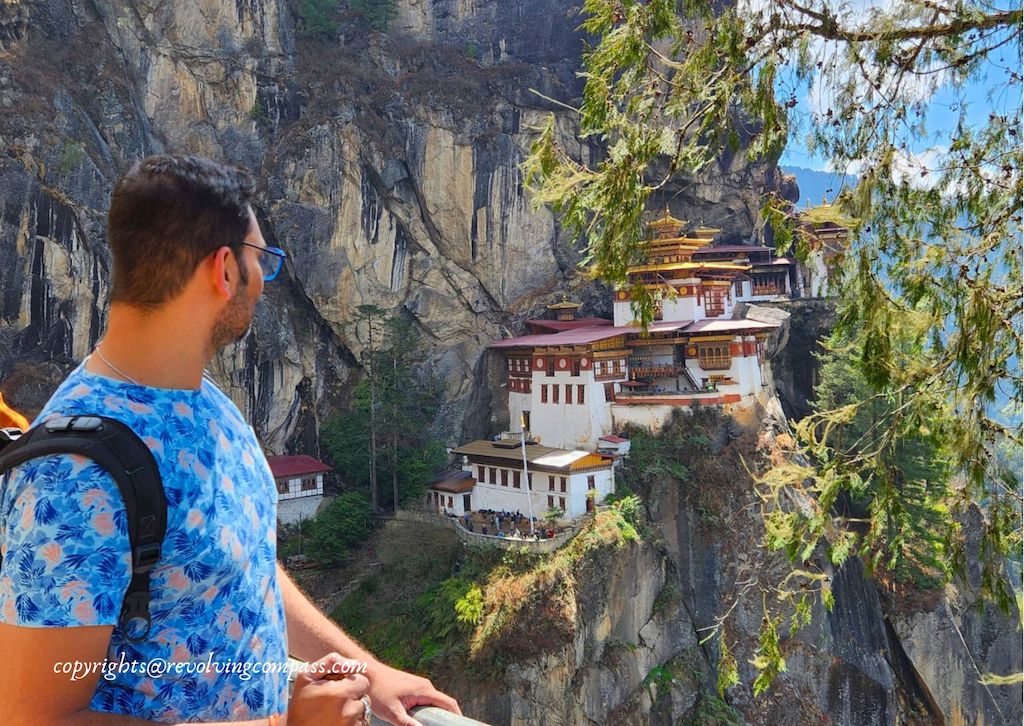
Useful resources from our Bhutan trip
If you are looking to plan your own trip to Bhutan, checkout our comprehensive guide to visit Bhutan, which contains all the information on places to visit, things to do, currency, weather, where to stay, what to eat and anything else that you would want to know before planning a trip to Bhutan.
Here’s our 7 days Bhutan trip itinerary which you can also follow. The post also includes suggestions on how to add extra days to the trip to make it more relaxing or more places to see.
If you are wondering what documents are required to obtain a tourist permit to visit Bhutan from India, check out this guide on how to obtain the same.
Places to see in Punakha and why you must include Punakha in your travel itinerary
A virtual tour of the Punakha Dzong – a place you must not miss when visiting Bhutan
Our adventure on the Punakha Suspension Bridge
Why you must include the Buddha Point in your Thimphu sightseeing
A must visit in Phuentsholing – don’t forget to visit the Kharbandi Monastery for a tranquil experience and breathtaking views on your trip from Phuentsholing to Thimphu
PS: Some of our links are affiliated, this means we will earn a commission when you buy a service or product by clicking those links. However, this will have no extra cost for you.